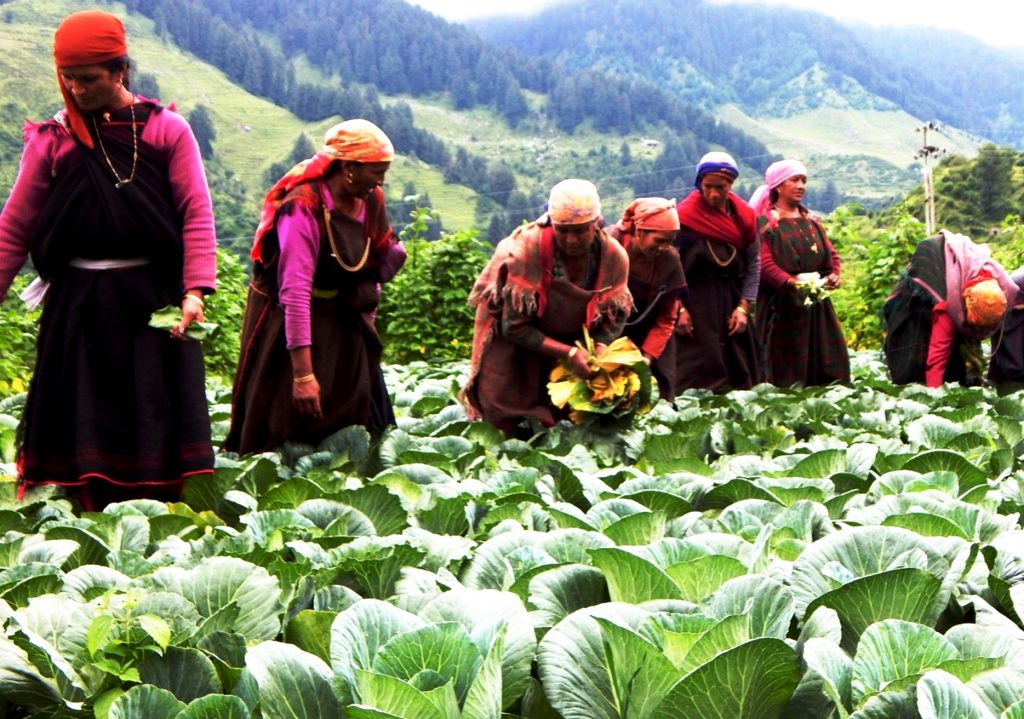Dharamshala: For the farming communities of inaccessible and remote Chota and Bara Bhangal regions of Kangra, locked high up in the Dhauladhar ranges, making a livelihood in the absence of any reliable marketing avenues used to be a lesson in survival.
About 130 km from here, the district headquarter, at an altitude of 8500 feet, Chota Bhangal is on the southern side of the Dhauladhar range and to reach Bara Bhangal, one needs to cross over high passes to reach the valley on the northern side of this mighty Himalayan range. For over 3 months in the winter, snow cuts off these regions from rest of the world.
For generations in the 7 villages of Kothi Kohar, Bargarh, Dharman, Malthan, Swai, Paolik and Luwaee that make up the Chota Bhangal region spread out along River Oahal valley, growing crops of potatoes, wheat, kidney beans (rajah) and maize was the only cash crops that sustained the local economy. With there being no road access, some of the surplus produce, painstakingly carried on human or animal backs, did find its way to the markets.

Educating the farmers and creating awareness about off-season vegetable cultivation is now changing the farming operations in the valley.
“The change from low yielding conventional farming, producing off-seasonal vegetables has increased household incomes many times over in Chota Bhangal, says a spokesman for the district administration. The valley has about 2700 hectares of fertile farming land.
Growing and marketing cabbage, cauliflower, broccoli, radish, coriander and other such vegetables, from a small area of about 700 hectares the farmers are producing about 7000 tons of vegetables that earns them about Rs 11 crores, said Kuldeep Dhiman, who is the district agriculture officer for the valley.
“Whereas earlier they earned only about 4 to 5 thousand rupees from cultivating one kanal lands, but after taking to growing vegetables, the income has increased to about Rs 25 thousand per canal,” claimed Dhiman. To further improve yields, a sprinkler irrigations system has been got installed in some of the villages.
To improve marketing access, the state government has opened up a local vegetable market at Malthan village. Besides buying up the produce at this market, the farmers are also assisted in reaching markets in Punjab, Haryana, Delhi and Chandigarh where they can sell their produce at competitive rates directly.
It took time to convince the farmers of off-season vegetable cultivation in place of the traditional crops, says Dhiman, but once the income started improving, the successful project has become a self motivating scheme that every passing years is drawing more farmers in the region.
Arvind Sharma is an award winning bi-lingual journalist with more than 20 years of experience.
He has worked with Divya Himachal, Dainik Jagran, Dainik Bhasker, Vir Partap, Ajit and PTI.
In 2010, he was conferred the Himachal Kesri journalism award. He reports on the Tibetan Government in Exile, politics, sports, tourism and other topics. He lives in Dharamshala.


